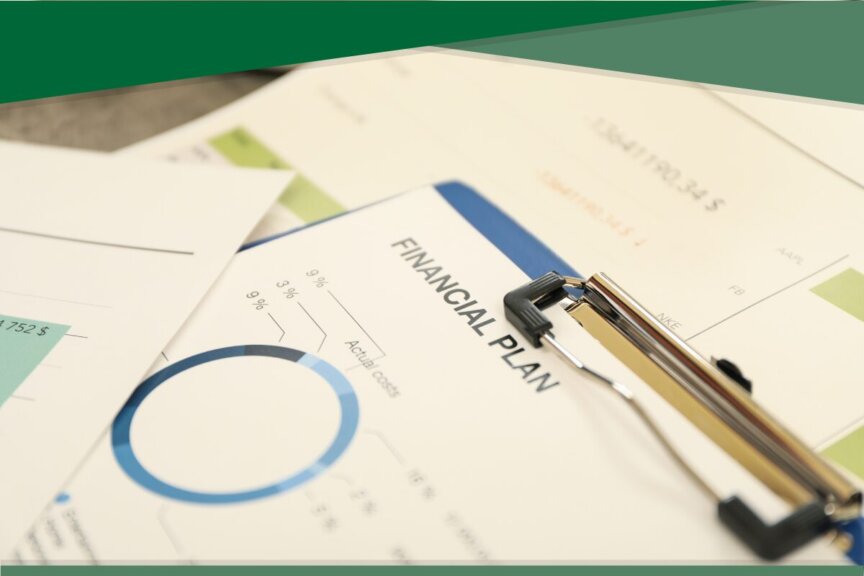Financial planning: essential steps for building a secure financial future

Financial planning can seem complex, especially for those who may not have much experience managing their finances.
However, creating a financial plan is crucial for anyone who wants to gain control over their finances, avoid unnecessary debt, and work toward personal goals, whether that means saving for emergencies, buying a home, or planning for retirement.
Here’s a complete guide to understanding financial planning, its benefits, and practical ways to get started with a straightforward approach.
What is Financial Planning?
At its core, financial planning is the process of organizing your money so that you can meet your financial goals.
It involves assessing your current financial situation, setting realistic goals, and putting a plan in place to reach those goals.
This could mean saving for an emergency fund, preparing for unexpected medical costs, or making large purchases more affordable through budgeting and saving.
Financial planning is about more than just saving money; it’s a proactive approach to making sure that your finances are prepared for both planned and unexpected expenses.
For many people, this might include reducing debt, managing spending, or even planning for bigger financial goals like homeownership, education, or retirement.
How Does Financial Planning Work?
Financial planning works by helping you understand your finances at a detailed level.
The first step is often to look at your income, expenses, debts, and savings to get a clear picture of where you stand financially.
Once you know your financial status, you can create a budget that outlines how much you’ll spend on necessities, how much you can save, and areas where you might cut back.
An effective financial plan is also adaptable. As your financial situation changes—such as getting a new job, paying off a loan, or welcoming a new family member—you can update the plan to ensure it stays relevant to your needs.
For many people, this approach provides peace of mind and a clear sense of direction for the future.
Benefits of Making a Financial Plan
The benefits of financial planning are many, and they can make a significant difference in your overall financial well-being. Here are some of the key advantages:
- Financial Security: A financial plan provides a safety net by helping you set aside money for emergencies and avoid relying on debt to cover unexpected expenses.
- Knowing that you have funds set aside can bring a sense of security and reduce financial stress.
- Better Budgeting and Spending Habits: With a clear financial plan, you’re less likely to overspend. This can help prevent unnecessary debt, allowing you to live within your means and prioritize saving over spending.
- Goal Setting and Achievement: Financial planning allows you to set specific, measurable goals, making it easier to track progress. Whether it’s buying a house, funding your children’s education, or building a retirement fund, a financial plan helps you stay on track.
- Debt Management: If you’re managing debt, a financial plan can help you allocate funds specifically toward paying it off, while still saving and meeting your other financial needs.
By creating a financial plan, you gain control over your money, giving you the confidence to face both small and large expenses with a plan in mind.
When to Create a Financial Plan?
People often think they need to wait for a major milestone to start planning their finances.
However, financial planning is beneficial at any stage of life. Here are some moments when it’s particularly useful to begin or revisit a financial plan:
- Starting a New Job or Receiving a Salary Increase: New income is a great opportunity to create or adjust a financial plan. With more income, you might want to increase savings, set new goals, or pay down debt faster.
- Getting Married or Starting a Family: With a growing family, financial responsibilities increase, making planning essential to cover everything from childcare costs to long-term education savings.
- Major Life Changes (Job Loss, Health Issues): Unexpected changes can create financial strain. Having a plan ensures you’re better prepared to navigate such situations without unnecessary debt.
- Approaching Retirement: Preparing for retirement involves more than just saving; it’s about ensuring your savings will last and cover all your needs. A financial plan can help you transition into retirement with confidence.
Creating or updating a financial plan whenever your income or life circumstances change is a proactive way to stay financially secure.
How to Create a Financial Plan
Creating a financial plan may seem intimidating, but it doesn’t have to be. Here’s a step-by-step guide to building a financial plan that suits your needs:
- Assess Your Current Finances: Begin by reviewing your income, expenses, debts, and any savings or assets you currently have. This will give you a snapshot of where you stand financially.
- Set Financial Goals: Think about both short-term and long-term goals. Short-term goals could include paying off credit card debt or building a small emergency fund, while long-term goals might involve saving for a house or retirement.
- Create a Monthly Budget: A budget is a critical tool for financial planning. Allocate portions of your income to necessities (like rent, groceries, and bills), savings, and other expenses. A balanced budget should cover all essential expenses while still leaving room for savings and a few non-essentials.
- Prioritize Savings and Investments: Allocate a portion of your income to savings, whether it’s an emergency fund, retirement account, or other investment. If possible, look into savings accounts or low-risk investment options that allow your money to grow over time.
- Track and Adjust Your Plan: Life is unpredictable, so it’s important to revisit your financial plan regularly. Set aside time each month or quarter to review your budget, track your spending, and adjust your goals as necessary.
Many online resources and budgeting tools are available in Canada, such as Mint Canada and the Financial Consumer Agency of Canada, which provide templates, calculators, and advice on how to create and stick to a budget.
What Are the 5 Steps of Financial Planning?
To help simplify financial planning, here are five clear steps you can follow to build a reliable plan:
- Evaluate Your Current Financial Situation: Review all income sources, debts, savings, and expenses. Knowing exactly where you stand is essential before setting goals.
- Define Clear Financial Goals: Choose specific, measurable goals for what you want to achieve financially. Goals could range from “paying off $5,000 in debt within a year” to “saving for a down payment on a home.”
- Develop an Action Plan: Create an action plan for how you’ll reach each goal. This might include setting up automatic savings transfers, choosing a specific debt repayment strategy, or finding a budgeting tool to help manage your expenses.
- Implement Your Plan: Begin following the steps outlined in your plan, keeping track of your spending and saving habits. Adjust your spending habits as needed to make sure you’re staying on track.
- Review and Revise Regularly: Financial situations change, so it’s essential to regularly review and revise your plan. This will help you stay focused and ensure your goals remain achievable as circumstances shift.
Following these steps provides a roadmap to better financial health and helps make financial planning a part of your routine.
What is the 50/30/20 Rule in Financial Planning?
A popular guideline for budgeting within a financial plan is the 50/30/20 rule. This rule divides your income into three main categories:
- 50% for Needs: This category covers all essential expenses, such as rent, groceries, utilities, and transportation.
- 30% for Wants: Wants include anything non-essential, such as dining out, entertainment, and hobbies.
- 20% for Savings and Debt Repayment: This last category goes toward your savings, retirement contributions, and paying down debt.
Using the 50/30/20 rule is a simple way to structure your budget.
For example, if you make $3,000 a month, you’d allocate $1,500 to needs, $900 to wants, and $600 to savings or debt repayment.
This structure helps ensure you’re covering essential expenses while also working toward financial goals.
Financial planning is an important step toward achieving long-term financial stability.
By organizing your finances, setting goals, and creating a workable budget, you can prepare for unexpected expenses and work toward major milestones, such as homeownership or retirement.
Take the time to start a financial plan today, even if it’s as simple as setting a few goals and creating a budget. Financial planning is not a one-time task but an ongoing process that can adapt to your changing needs.
Related content

Canada Workers Benefit: What it is, who can get it and how to apply

How to Build Credit from Scratch: Practical Steps for Canadians

Capital gains tax in Canada: what you need to know and how to minimize it

Digital wallets: are they a good option for low-income canadians?

How to Access Government Grants and Benefits for Low-Income Canadians
